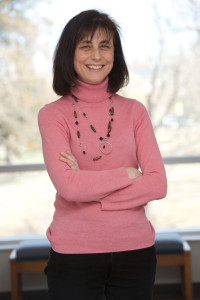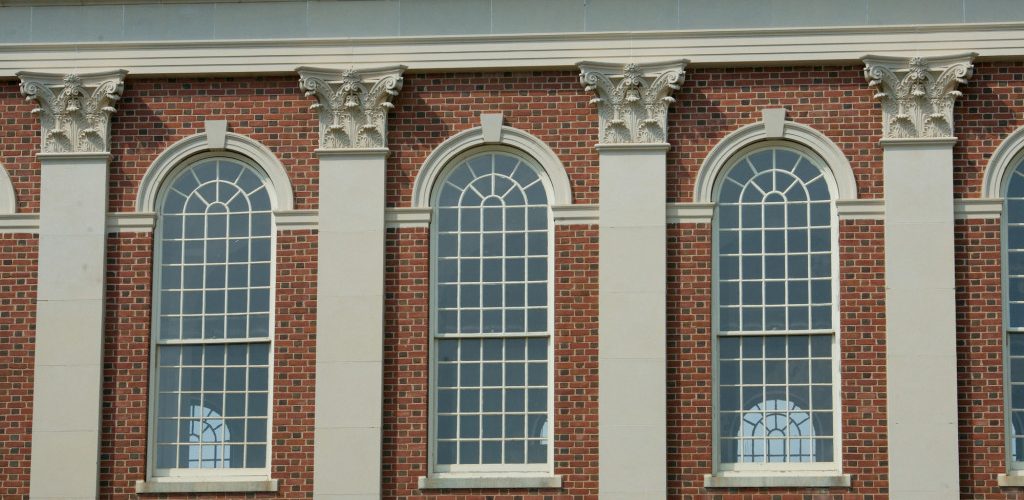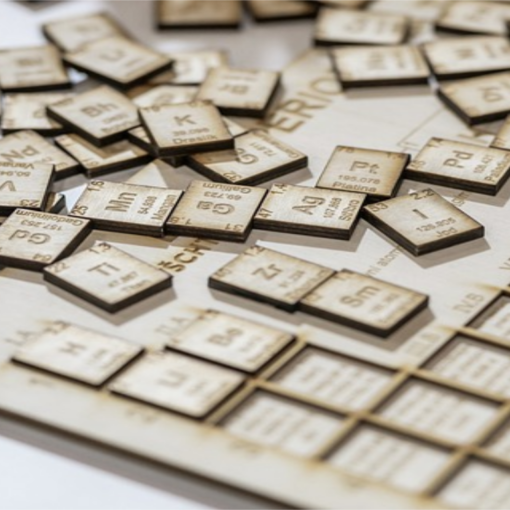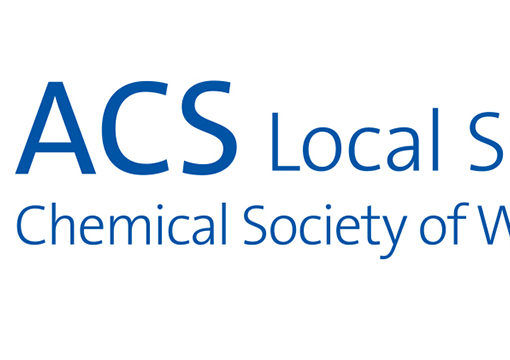By Raina Robeva, Professor of Mathematical Sciences, Sweet Briar College
Surreal. That’s the word that best describes our life on the Sweet Briar campus for the last ten weeks.
Imagine a community sobbing with grief and disbelief on one day, then turning sorrow into action on the next. Imagine professors calling rival institutions with requests to transfer their students, and alumnae going through contact network lists to secure new jobs for their one-time teachers. Imagine their efforts to stay focused on academics with protest rallies, media coverage, and ongoing court battles as constant distraction. Imagine faculty members struggling with the guilt of finding new jobs while their friends and colleagues still have no place to go. Imagine students maturing by a decade overnight.
Much has been written about this in the press already. Some media outlets have shown compassion, others have remained neutral, yet others have been outright hostile: This is how a market economy works, people. Grow up and stop obsessing over a tiny imploding college in Central Virginia. And why would we care about Sweet Briar anyway? Many articles have recounted the feeling of shock and disbelief that fell upon the Sweet Briar community on March 3rd. The skies were overcast, the day was dark, the snow on the ground had frozen into crusty layers—Edgar Allan Poe would have loved the setup. He could have written it as a frightening tale about anger and urge for revenge, a tale about seeking justice in a tragically misguided way. But I would rather think of it as a tale of celebration and triumph—the story of a 114-year old institution succeeding in its mission in a spectacular way.
March 4th was difficult. Some classes were canceled; mine went on as scheduled, but many students were absent. With three days to the start of spring break, many of them later told me, Sorry, I just had to go home. And it made perfect sense. The mood was funereal—not like parting with a loved one at the end of a long, full life, but like having to come to terms with a tragic and fully preventable loss. If only we’d known. If only we’d been asked to help. If only we’d been given a chance.

Copyright Sweet Briar College. Photo by Meridith De Avila Khan.
And then, all of a sudden, the emails started coming. The tweets and blog posts started mounting. Alumnae—young and old, both frequent contacts and those whom we barely remembered—they all came in droves, bearing one simple message for those who had given up and thrown in the towel: Not if we can help it.
Fundraising efforts began that same day. Alumnae founded Saving Sweet Briar, Inc., an organization dedicated to keeping Sweet Briar open. Financial experts and legal counsel were retained, plans for the academic future of the institution began to take shape (it was named SBC 2.0). Everyone was invited: to listen and discuss; to contribute their expertise, money, time, or ideas; to help protect something worth protecting; to lead and provide stewardship where the President and the Board of Directors had failed in their duties. The Sweet Briar Vixens had been called to action, and they weren’t going to go down without a fight.
I have spent nineteen years of my professional life at Sweet Briar, and I have been proud of my students countless times. In the department, we keep a record of those completing prestigious graduate programs and employment. We follow their progress and stay in touch. We boast about their achievements at public events, drawing lines between their success and the excellent liberal arts education they received at Sweet Briar. Their stories motivate current and future students. None of this is surprising.
What did surprise me—the silver lining on this otherwise heartbreaking story—is that I had the chance to see how successful and confident all of my former students have become. Students have returned five, ten, fifteen years after I last saw them. Girls who struggled academically, who seemed unprepared to enter the world, about whom I had wondered, with concern, after graduation—those girls came back as confident professionals, engaged parents, and committed alumnae. I needn’t ever have worried.
Their reasons for returning to Sweet Briar varied. Some wanted more information about the situation and how to help. Some came to talk with students and faculty about transfers and job opportunities, should we lose the fight. Some came simply to say hello, to tell us about the intervening years and show us pictures of the children. No matter why they came, they all had a story about how Sweet Briar had taught them to persevere, and to never take a no for an answer. During their time on campus, they had all learned never to concede an argument simply because their opponent held a position of authority.
After the news of the closure, no two days were alike. One Friday afternoon, hundreds of long-stem pink roses were delivered to the grounds; alumnae handing one to every student and professor. They wanted us to know we were loved. People I had never met before gave me hugs and told me how much the institution meant to them.
Saving Sweet Briar is like a second full time job, they said. We haven’t slept much lately and our houses need serious cleaning, but there is nothing as important right now as saving our home. We won’t rest until it’s done. During exams, ice-cream and taco trucks arrived on campus to comfort students, faculty, and staff—no charge. A network called Alumnae Angels is helping students who need financial assistance with the transfer process. Husbands, kids, faculty, current students, and parents have joined the fight at all levels. Activities have spanned a full spectrum: from legal challenges, to investigative journalism, to political wrangling with Virginia’s Attorney General, to Starbucks fundraisers, to children’s drawings of foxes in pearls hashtagged #SaveSweetBriar across every channel of social media. Surreal.
About six weeks in, I attended a meeting of the Maryland-District of Columbia-Virginia section of the Mathematical Association of America. Everybody knew of Sweet Briar’s announced closing. Many colleagues came to offer words of comfort, to ask if there was any way to provide help. They came to me in a truly difficult time, and I will forever cherish those expressions of genuine friendship, of honest concern. But I couldn’t help feeling like a victim of a natural disaster who, weeks after a hurricane had destroyed my home, still hadn’t processed the loss. Everyone outside of Sweet Briar had their electricity and their Wi-Fi back; they had forgotten there’d ever been a hurricane. As I summarized the latest in Sweet Briar’s legal proceedings, one colleague looked at me in disbelief and asked flatly, as though of someone deluded, Where would your students be coming from? Who would want to send their kids to a college like that? My protests that the closure was unjustified didn’t matter; she was simply stating the obvious: Sweet Briar was dead and it was time for us to move on. Delusional or not, our alumnae hold tight to their rallying cry: Not if we can help it.
Every year, the thousands of colleges and universities around the country take time to evaluate their goals, their programs, their mission. Some schools are more serious in carrying this exercises out than others, but every single one must perform some self-reflection to secure its continued accreditation. Goals must be tied to mission statements, and each goal must have an established measure and a standard for success. It is all very academic. Measuring success in “real life” after graduation is elusive, and we try to use our figures as proxies. But then, once in a hundred and fourteen years, when a tragedy strikes, we get a true chance to see how an institution’s mission and standards have shaped the lives of its graduates. This situation right here? This is the real deal.
Part of Sweet Briar’s stated mission is to prepare women “… to become active learners, to reason clearly, to speak and write persuasively, and to lead with integrity.” In the past few weeks, we have seen our alumnae do all of this in real time. They have educated themselves on legal and financial issues, often far away from their professional fields of expertise; they have questioned an administrative act executed hastily by the Board of Directors and provided viable alternatives; they have given interviews and written countless pieces for the press and on social media; and they have exhibited a level of leadership and integrity that has attracted national attention and done us proud at home. When they heard their alma mater was in danger, they ran instinctively to save her. Had they hired consultants, as the Board did, they would have likely told them that the #SaveSweetBriar efforts were naïve. After all, only twelve of all living alumnae were known to have the capacity of giving a million or more over a lifetime. Instead, in their naïveté, and in only ten short weeks, alumnae have raised over $1M in cash and over $14M in pledges for the next five years, well on their way to meeting a goal of $20M by the end of June. Most amazingly, the alumnae have done this without access to any official donor rolls, which the administration has staunchly refused to provide. Imagine if these women had been called to action sooner.
So here is my point. If a College means so much to its alumnae, it must have done something right. We must have done something right. It must be a place where the mission statement is not just some empty words on a plaque, but rather the front end to an academic plan that inspires action and ensures success. It must be a vibrant place that challenges its students to think for themselves, take action, and fight for their convictions. A place that empowers women to stand for what’s right with a furious resolve.
Who would want to send their kid to a college like that? If my daughter were considering colleges right now, I would very much encourage her to consider a school that so many would fight so fiercely to save. And something tells me there will be other parents out there thinking the same way.
#SaveSweetBriar
Click here to read other articles in our Stories from Sweet Briar series.
Raina Robeva holds a Ph.D. in Mathematics from the University of Virginia and is a Professor in the Department of Mathematical Sciences at Sweet Briar College, where she has taught since 1996. Her research interests span a wide range of topics including systems biology, the theory and applications of random processes and fields, and mathematical modeling for biology and the biomedical sciences. Robeva has written numerous peer-reviewed papers and book chapters and is the lead author/editor of four books published by Academic Press: An Invitation to Biomathematics (2008), Laboratory Manual of Biomathematics (2008), Mathematical Concepts and Methods in Modern Biology (2013), and Algebraic and Discrete Mathematical Methods for Modern Biology (2015). She is the Founding Editor and Specialty Chief Editor of the journal Frontiers in Systems Biology, Past-Chair of the Special Interest Group of the Mathematical Association of America on Mathematical and Computational Biology (BIO SIGMAA), and Chair of the Advisory Board of the National Institute for Mathematical and Biological Synthesis. In 2014, Robeva received the Outstanding Faculty Award of the State Council of Higher Education for Virginia- the Commonwealth’s highest honor for faculty at Virginia’s public and private colleges and universities in recognition of superior accomplishments in teaching, research, and public service. Raina Robeva can be reached here.
Cover photo credit: Copyright Sweet Briar College. Photo by Meridith De Avila Khan.
If you are a student, faculty, staff member, or alumni of Sweet Briar and are interested in writing about your experience, we would love to hear your stories as well. Email us at thecapitalchemist@gmail.com.





22 thoughts on “Sweet Briar’s Closing: The Story from the Inside”
“…the story of a 114-year old institution succeeding in its mission in a spectacular way.” Exactly. Raina, you have so beautifully articulated what has fascinated me over these months. I spent 14 years at SBC (13 years ago) and I have been astonished at how fully the Board underestimated the alumnae. For all the bad choices the administration made over the past several years culminating in the spectacular failure to do due diligence before dropping their bombshell, the Save Sweet Briar (SSB) group has shown wisdom, grace, and grit that puts the administration to shame. The comprehensiveness of the work of SSB is fascinating. All manner of planning has been done along with brilliant networking with experts in and out of the community. I fully expect SSB to succeed and have no doubt that the same group that has been finding more than $1M a week can find students to launch SBC 2.0.
Yes. And it amazes me how the alumnae groups have able to organize so well and accomplish so much in such a short period. One positive outcome out of this fiasco was to identify a contingent of highly dedicated and intelligent people who love the institution. It will be wonderful when they take charge of the college
This hits the nail square on the head. What kind of women does Sweet Briar graduate? Look around. If you haven’t seen or heard one in the last three months, you’ve probably been living under a stone…under which nobody has ever looked.
One other thing they teach at Sweet Briar is statistics. Maybe Dr. Robeva should offer to give the administration a free course. With some stat basics, they would have known that when only 12 of 347 people in a sample are identified as being able to give $1 million or more, that does not mean there are only 12 people in the entire alumnae base with the capacity to give that much. Using the board’s logic, there are only a total of 347 potential donors.
Oh, Raina, you have captured all of this so perfectly. Thank you for this incredible summation.
And more: “Who would want to send their kid to a college like that? If my daughter were considering colleges right now, I would very much encourage her to consider a school that so many would fight so fiercely to save. And something tells me there will be other parents out there thinking the same way.”
Yes, yes, yes. That’s the way we will all Save Sweet Briar!
Raina, elegantly and truthfully stated as you always do. Thank you!!!
Yes I would send my daughter to a school like Sweet Briar! Look at the gals atacking the problem! They are standing up for what they believe in. For what is right. Not just for themselves, but for young women to come! They are doers, movers, and shakers. Great models for the next generation!
This gives me great hope. Dr. Robeva was the most patient person I ever encountered when I clearly had no clue what I was doing in Calc 2 at Sweet Briar!! She is one of the reasons why I now strive to be patient with my 6th grade math students who come to see me for extra help after school. She never once turned me away and always made me feel like I was capable of doing well. Thank you Dr. Robeva!! We will #SaveSweetBriar!
Thank you for this beautifully written article. I graduated from SBC in 1979 and was thankful I never had to take a college level Mathematics class in order to do so! Your comments, and those of your current and former colleagues on the Faculty, continue to make me proud and grateful that I was able to attend and graduate from such an amazing place. I know I am not alone when I say how blessed we were, and are, and WILL continue to be, by the high level of love and dedication (in the classroom and out of) that is exemplified by our Faculty!
Thank you for this.
I was one of those alums who assumed my alma mater was doing just fine, until I received the e-mail announcing the closing. I cannot describe adequately the rage I felt listening to the conference call while staring at my annual giving envelope sitting on my desk.
They had solicited funds while secretly planning to close.
That Jo Ellen Parker and her inner circle destroyed the health and well being of Sweet Briar, I now have no doubt.
But that the people that she left behind to finish the business of closing down SBC are so totally committed to her death that they have rejected all offers of aid is baffling; so baffling that I and others can only assume self-interest.
I hope and trust that the courts will realize that something quite stinky, and most likely illegal, is lurking in the shadows, yet to be revealed.
I believe that IF the courts do the right thing, WE WILL SAVE SWEET BRIAR.
Each time we publish articles like this, we help prevent them from finishing the dirty job they have started.
I have been joking over the last few weeks that our new slogan needs to be “Sweet Briar College: Where Heroes are Made.” This piece wonderfully sums up what much of the media is ignoring–that our fight is real and it is successful. We should absolutely own this chapter of our history in Sweet Briar’s new iteration. Never have I been more proud to be an alumna than in these last three months. The ingenuity, energy, and poise I have witnessed are breathtaking. Sweet Briar women are truly a fearsome sight to behold and I would hope any parent would be proud and honored to see their daughter become a part of this incredible community.
Dr. Robeva,
Thank you! You are an amazing woman and roll model! To this day I think back to your classes and how you were able to connect with each student to find her strengths, how you were always available for extra help and study prep, how you genuinely cared about those around you. There are many people in life who make academic impressions on our lives but you also help sculpt ladies to become women. I think of you often and know so many others do as well. Thank you so much for all you have done for me and for every one of us who came through your doors. Who would have thought so many of us could make it through ODE 🙂
Amanda Walton ’04
My sentiments exactly. Dr. Robeva’s influence extended well beyond the classroom. Thank you so very much for all that you have done.
Jozanne S. Summerville ’04
Thank you for your beautiful words Dr. Robeva and for expressing what so many of us alumnae are feeling. I came back to reunion 2015 from the west coast, having not been on campus in 17 years. I instantly felt at home, like I had never left. It was so similar to the feeling I had when I stepped on campus for the first time – “this is my new home”. Although I have known many strong Sweet Briar women (and credit Sweet Briar for making me one too), I was amazed, gratified and humbled by the passion and resolve I saw among my fellow alums at reunion. We all came for one purpose – to show the world that Sweet Briar matters, we still consider her our home and we will not let her down in her hour of need.
When I returned home, I was playing with my 10 month old granddaughter. She reached for my Sweet Briar ring. I told her, “Someday you can go to Sweet Briar too Eva”. I am certain there are many other parents and grandparents who feel the same way. We will save Sweet Briar!
Professor Robeva, you have clearly articulated the thoughts that have been echoing since this all began three months ago. This place is indeed special and I am grateful for the time spent there, especially in your classes. Before I arrived, I had no idea I would major in a STEM field. In your Calc II class, I realized that I could and not only that, but I should. Your Biomathematics class with Professor Robin Davies was my favorite math class among many amazing experiences in the Math Department. Taking classes from (or daresay I, “with”) the best in the business – yourself, Steve Wassell, and Jim Kirkwood – makes for a truly amazing and diverse experience. In addition to that, the authentic compassion for students you describe is spot on. We, your students, always felt at home because of the attitudes of genuine caring displayed by our Professors. We will certainly continue to work toward the continuation of Sweet Briar, working toward a resolution that is both fair and in keeping with the wishes of Indiana Fletcher Williams. Sweet Briar is far from done; we have only just put our pearls on.
Thank you Dr Robeva for sharing all of these wonderful observations. This is the unfolding of our finest hour as members of the Sweet Briar alumnae and community. I, too, had thought all was well with SBC until I received the email from the administration. My first thoughts were, “Who do they think they’re trying to bulldoze?” Then the thought came, “This must be a land grab.” Then anger followed my astonishment. I had only visited SBC about a half a dozen times since I graduated in 1977. Several days before this year’s graduation I visited the campus and I also attended the reunion on Saturday and early Sunday. I was not expecting to see the stalwart women who were spilling over with energy and spirit worthy of Indiana Fletcher Williams, not doubting that we could in fact save our school. It was very moving and I found myself realizing just how much more Sweet Briar meant to me. In fact, with each passing year it has become more dear to me. I thought it would always be there as a constant, a reminder of glorious days past and as an inspiration for the future. I cannot see how the Supreme Court justices in Richmond will fail to take immediate steps to preserve our venerable and irreplaceable Sweet Briar College.
Raina, this is, quite simply and powerfully, superb.
Raina has always been brave, outspoken, and articulate when it matters most.
Thank you Raina for this strong article about what Sweet Briar’s faculty has done well — educating women who are able to go out into the world. Also, thanks very much to the Capital Chemist for providing a home for these kinds of articles — I’m looking forward to the next one already!
Many learning opportunities through the past few months . This article zooms out and exposes the bigger picture and through authentic words of truth it seems clear the big picture is saying….Sweet Briar ‘will ‘continue ..because it can and the outcome is ‘good’ not only for the students, the faculty, the alumni, education….but for the purpose for which the mission was created….to educate girls, empower them and lead with integrity. The past few years have been preparing Sweet Briar for change…that needs to happen and is happening . Stay encouraged !
This is such an eloquent, moving article that perfectly captures what Sweet Briar means to so many people. Those who sought to destroy the college seriously underestimated the alumnae and had no idea what they were about to unleash.
“Rise and rise again, until lambs become lions.”
A great article, Dr. Robeva. It really brought things into focus for me. After my first reaction of sorrow wore off, I began to realize: Sweet Briar taught me how to think, how to do research, how to act on my own. Neither of my other two colleges gave me such useful training although they did give me degrees (M.S. and PhD).
So I read all the accessible material, and thought “what can I do?” with my mind and the available information. Payback time. I have done what I could–which, granted, is probably not going to turn the situation around single-handed–but at least I have used my Sweet Briar tools to do my best for my college. If all the alumnae (including the ones now on the Board of Directors) would do the same, Sweet Briar would survive and would probably be even stronger. I trust that it will happen.
I want to highlight a phrase in Raina’s superb article that could be easily missed:”without access to any official donor rolls, which the administration has staunchly refused to provide. ”
What puzzles many is why, if the BoD thinks the cause is hopeless, do they not cede leadership to those that believe the institution can be saved? Rather, they create impediments wherever possible.
The alumnae on the board must have missed class the days ” lead with integrity” was a topic